Creativity Heals Trauma

In the book Trauma and the Soul Jungian therapist Donald Kalsched writes, “survivors of early trauma often report that an essential part of themselves retreated into a spiritual world to take refuge and support when there is the absence of such human person in their lives. Sometimes this spiritual world gives the trauma survivor privileged access to immaterial realities that remain inaccessible to people who live mostly in one world. Many of these patients have mystical connections to animals, nature access to healing capacities, psychic powers, intuitive wisdom, artistic talent. On the other hand sometimes the spiritual world also torments the trauma survivor in ways that better adapted people never have to worry about.”
How does shadow (unknown, mystery and hidden trauma) work help heal trauma?
One of the main ways shadow work heals is by allowing for catharsis – or a release of pent-up unconscious emotions and repressed memory. This can allow people to heal their trauma and pain, which in turn may lead to improvement in other areas of life such as relationships, health and careers.
Where is trauma stored in the body?
Trauma is physically held in the muscles and bones —It is emotionally held in the body. Memories are held in the psyche or subconscious, where creative, emotional and spiritual experiences are stores. To travel into this unknown part of the brain takes, slowing down, moving beyond judgements, somatic experiencing, creative experience and non-linear emotional experience
It is a felt sense energy that we feel in the body that causes hypervigilance, fright, flee and fight. Tightness, perspiring, shaking, nausea, light headedness and other sensations that you that a wound or trauma is surfacing. You either shove it down or allow the physical sensations to guide you toward the emotional memory to be expressed and released.
When emotions are frozen in the body it can cause chronic illness, mental illness, addiction and unhealthy attachments. The need to protect oneself from perceived threats is stored in the memory and emotional centers of the brain, such as the hippocampus and amygdala.
What is an example of shadow projection?
We engage in shadow projection when the memory of trauma is frozen in the brain and body. The parts of ourselves that are in darkness, blame, shame, judgement, isolation, control, unacceptable feelings ie rage or sadness. You may have unconscious envy or deep hatred, even though you consciously see yourself as a loving, magnanimous person who doesn’t ever feel those darker feelings.
What triggers shadow work?
Triggers include anything that brings up an emotion, be it positive or negative. Not addressing the negative triggers – like words or phrases, routines, or even places –sights, smells, taste and sound can lead to an increase in stress and continuing to allow your shadow to grow if not addressed.
What is inner child work?
Behaviors as an adult stem from our childhood experiences. Inner child work is an approach to recognize, remember and release frozen emotions from childhood trauma. The processfocuses on addressing unmet and unexpressed needs by reparenting, and catharizing trapped emotions that limit and paralyze our choices and actions. As unhealed victim adults we unconsciously play out the victim child’s behaviors, people pleasing, manipulation, blame, shame, control, and either attack or collapse out of fear and protection. Unlearning learned reactive, called family patterning, self- protective behavior is a large part of the recovery process.
How is creativity a feminine awakening?
Creativity takes us beyond our own limits and beyond ourselves in a way that can be called spiritual. This is a “right brain” experience which taps into the feminine brain and energy. The creative process is an expression from the gut. A flash of insight, a gut knowing, the unknown, the mystery from within. Some call it the “duende” The feminine is the soul, psyche of creativity and creation.
What is the duende and creativity?
The duende is the energy of creativity. It is an emotion, intuition a non-verbal knowing that comes from the deep mysteries of spontaneous emotional response. It is difficult to translate duende. Can you ever really translate a feeling? Only the feminine, the right brain, the women’s heart, body and soul, can language this experience. This is where all creativity and creation exist.
Seven traits of the creative feminine energy
Emotional/fiercely sensitive
Languages through the senses, not words
Experiential
Seeks individuation
Resilient
Connection, relationship and merging through meaning
Creates art based on intuition
How is the cyclic pattern of nature birth-death-rebirth the same as the creative process?
All creation is a creative organic natural cyclic process. We create as the universe creates. In nature there is birth, a seed, then the surrender to something unknown and mysterious, (death) then a rebirth into something new, visionary and innovative.
Three stages of Creativity
Stage 1: Preparation – Birth the seed
This is an internal process Meditating, visualizing, imagining, intuiting deeply to generate and engage with ideas.
Stage 2: Incubation – Surrendering: (death) Letting go of outcome
Surrender. Feeling, ideas, images marinate in the mind. As ideas slowly simmer, the work deepens and new connections are formed. During this period of germination, the artist takes their focus off the problem and allows the mind to rest. While the conscious mind wanders, the unconscious engages in what Einstein called “combinatory play”: taking diverse ideas and influences and finding new ways to bring them together (dancing, listening to music, spontaneous play, intuitive writing or painting) “Imagination is the highest form of Intelligence.” Albert Einstein
Stage 3: Illumination – Rebirth
Next comes the elusive aha moment. After a period of incubation, insights arise from the deeper layers of the mind (duende)sorting through, and break through to conscious awareness, often in a dramatic way. It’s the sudden Eureka! that comes when you’re in the shower, daydreaming, psychic dreams, doodling, taking a walk, or occupied with something completely unrelated. Seemingly out of nowhere, the creation presents itself.

